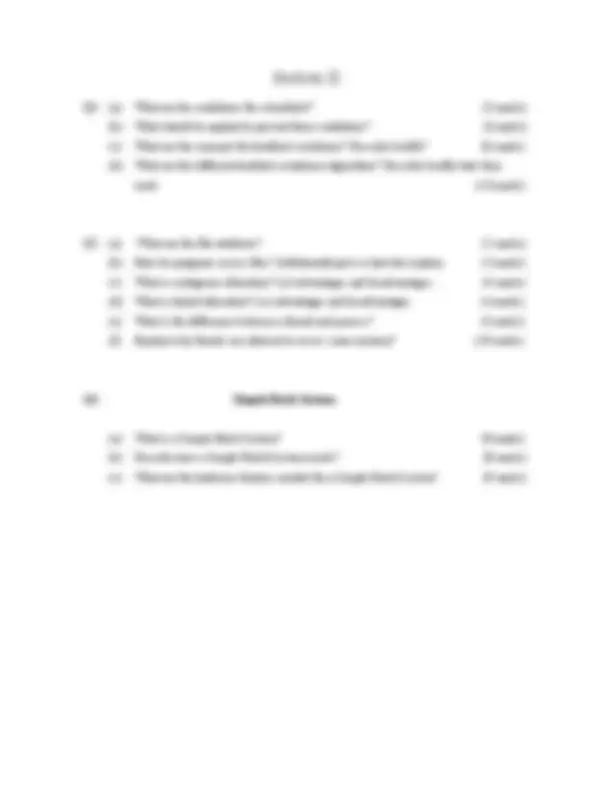



Study with the several resources on Docsity

Earn points by helping other students or get them with a premium plan


Prepare for your exams
Study with the several resources on Docsity

Earn points to download
Earn points by helping other students or get them with a premium plan
Community
Ask the community for help and clear up your study doubts
Discover the best universities in your country according to Docsity users
Free resources
Download our free guides on studying techniques, anxiety management strategies, and thesis advice from Docsity tutors
Main points of this past exam are: Local Area Network, Metropolitan Area, Wide Area Network, Osi Reference Model, Diagram Please, Transmission Impairments, Modulation, Analogue Signals, Digital Data, Encoding Techniques
Typology: Exams
1 / 3

This page cannot be seen from the preview
Don't miss anything!


(NFQ Level 6)
Answer four questions, at least ONE from Examiners: Ms. D. Griffin Section 1 and ONE from Section 2. Mr. J. Le Kernec All questions carry equal marks Ms. M. Meagher Ms. A. Brown
Q1. (a) Please distinguish between the terms Local Area Network (LAN), Metropolitan Area Networks (MAN), and Wide Area Network (WAN). (4 marks) (b) With the aid of a diagram please outline the OSI Reference Model. In your answer state the functions of the various layers. (6 marks) (c) What are transmission impairments? In your answer explain the most significant transmission impairments? With regards to noise , discuss the various forms of it. (7 marks) (d) With reference to Data Encoding what does the term modulation mean? Discuss in detail the encoding of Digital data to Analogue signals , and outline a specific situation where this type of encoding is important. In your answer discuss in detail two forms of encoding techniques. (8 marks)
Q2. (a) What are networking media, and with the aid of a table outline the media characteristics of the various forms of media. (5 marks) (b) With the aid of a diagram outline the specification of coaxial cable. In your answer state the main advantages and disadvantages of using this type of media. (5 marks) (c) What is Ethernet and outline that main properties of Ethernet? Explain in detail the operation of the protocol Carrier Sense Multiple Access\Collision Detect (CSMA\CD)? (5 marks) (d) Why is minimum frame size so important in the above protocol? (4 marks) (e) With the aid of a diagram, outline the main structure of an Ethernet II frame format. In your answer state the function of each field. (6 marks)
Q3. An Organisation has been assigned the Network address of 201.10.1.0/24, and the want to create a subnetting arrangement that allows them to have 50 hosts on each subnet created. (a) What class of network address has the organisation been assigned? What is their default subnet mask? (1 mark) (b) In your design how many subnet bits are used? How many subnets does this give you? What is the new subnet mask? (3 marks) (c) How many host bits are used, and how many hosts does this give on each subnet? Explain your answer. (3 marks) (d) Write down the subnet arrangements, the network addresses, the broadcast address and the available host addresses for each subnet. (10 marks) (e) Using the subnetting arranged as specified above, determine if the following are valid host addresses. Please state the subnet number that it may or may not be legitimate for and the reasoning why it is valid/invalid.